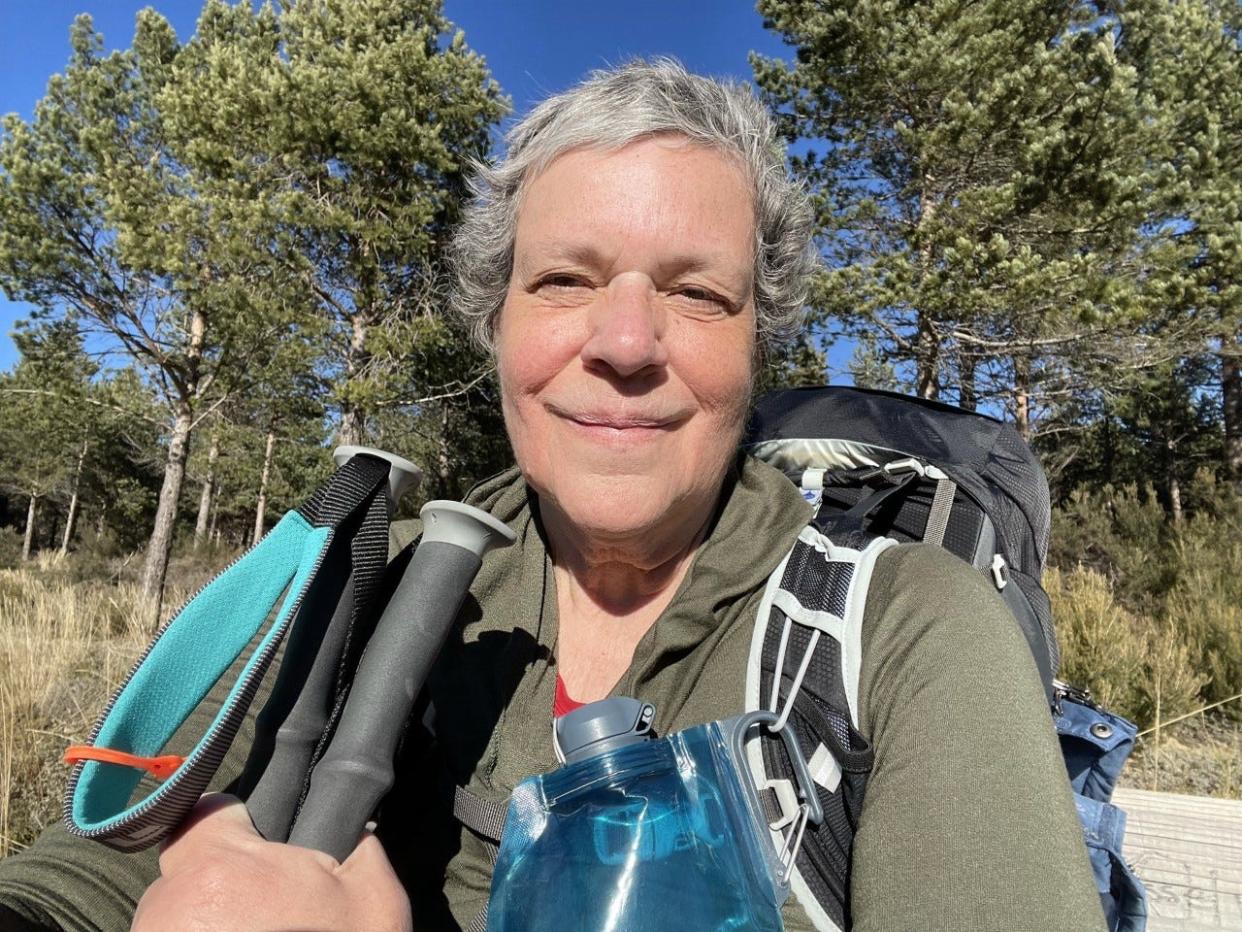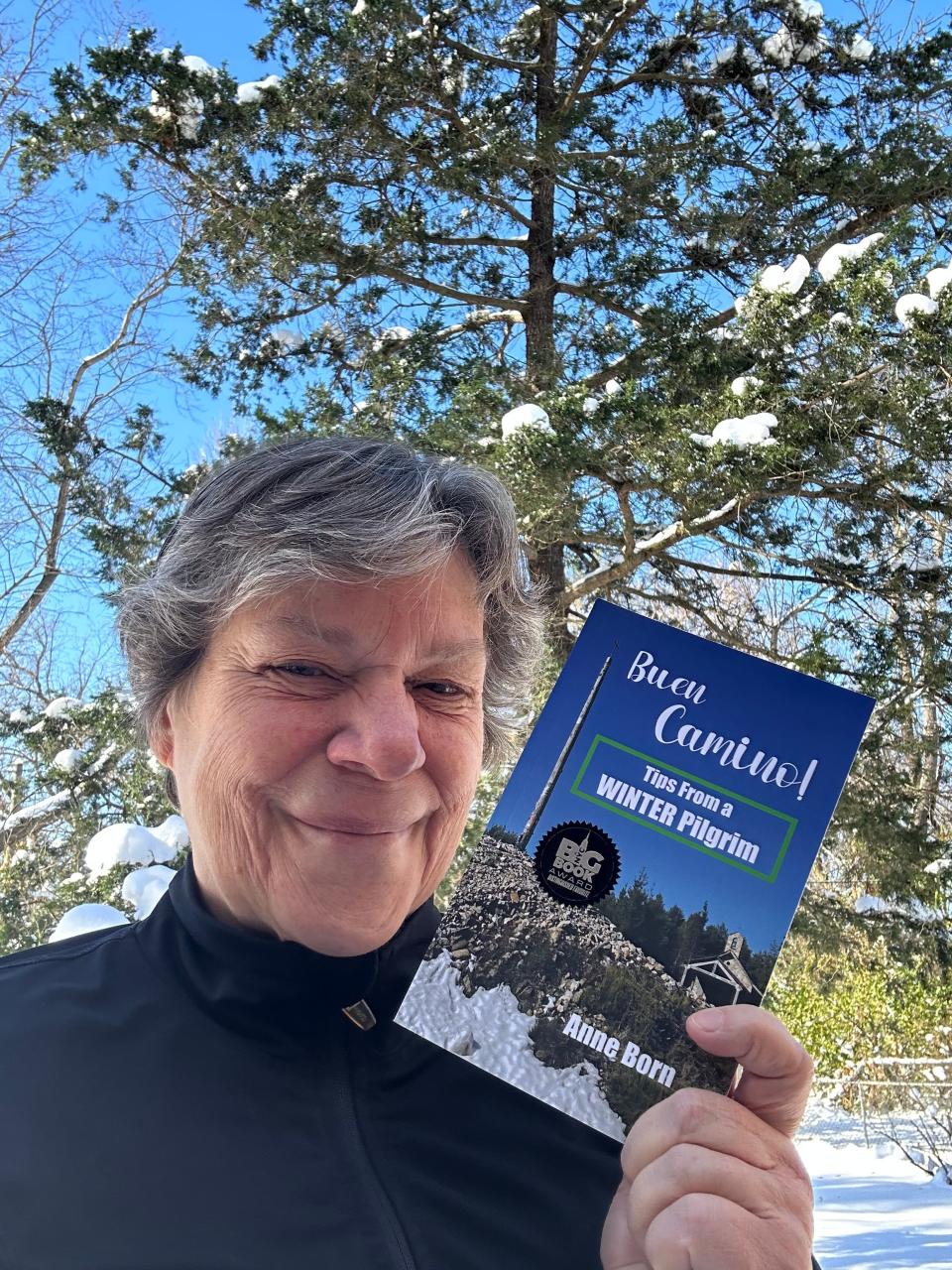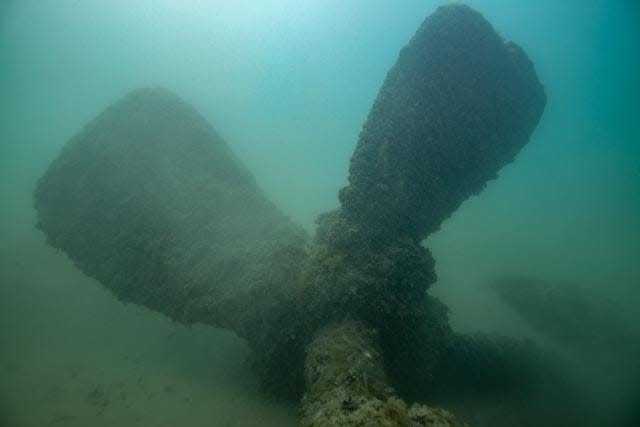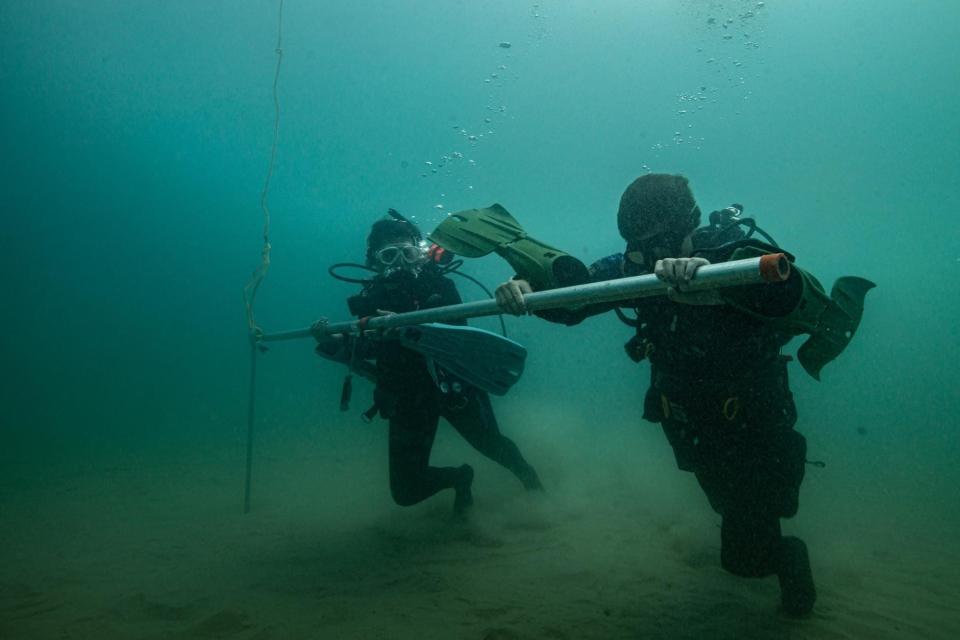Gifts: A hiker's 'liberating' way, a new shipwreck preserve and more Chinook

Many guidebooks for a 1,000-year-old pilgrimage in Spain, known as the Camino de Santiago, spell out the “correct” ways to hike or bike the Camino’s stone and dirt paths. And pilgrims, or pelegrinos, often feel committed to logging their precisely chewed out plans. That may be your way.
But, for Anne Born of Niles, she’s OK with skipping over parts — even taking a taxi to the next stretch down the road. Calling herself the Tumbleweed Pilgrim, she says her style of travel is “liberating.”
And, get this, she prefers to hike it in winter, when so few pilgrims come that 75% of eateries and lodging on the route are closed.
She’s written her own self-published guide books, too, and the latest one — “Buen Camino! Tips From a Winter Pilgrim” — was honored in the travel categories this year in both the NYC Big Book Award and the American Writing Awards. ($12.99 in paperback, $7.99 on Kindle; available on Amazon)

The Camino de Santiago, or Way of St. James, has several routes mapped from other European countries, all leading to the cathedral in Santiago de Compostela, Spain.
Her book follows the route sequentially, but she’s honest about the segments she’s personally missed — and has reasons for them. Like, in one case, when she took a taxi to speedily finish up and get home because her daughter had just given birth.
If she never makes it back to walk them, she’s OK with that because she’s already been on the Camino 10 times since 2009.
More Camino tips from 2017:Dad and sons hike, bike on Camino de Santiago
Born grew up in Niles and went to high school at the long-gone Saint Mary’s Academy in South Bend. She retired from work as a Columbia University administrator in New York and moved back to Niles in 2020, though she keeps an apartment in New York.
She likes to do the Camino in November or December, preferring the four-week Advent season that began Sunday and leads up to Christmas Day.
“Each of the families are trying to outdo each other with lights,” she says. “The towns just sparkle. All the kids are out. The grownups are taking them around.”
Her book offers cautions for winter’s mild chill (no central heat indoors) and safety because you won’t have as many companions. She prefers the solitude, noting, “the time to spend in your own thoughts is really valuable.”
Most pilgrims tend to do the Camino for spiritual reasons. In Medieval days, she says, pilgrims came who were close to death because they wanted to die close to the cathedral.
“There’s something about the cathedral that pulls you there,” she says. “You’re staring at this magnificent church and sitting with all of these people who’ve gone through all things to get there — blisters and scrapes.”

'Living museum' under water
Indiana has added an underwater preserve in Lake Michigan to protect the shipwreck of a 211-foot freighter that sank more than a century ago, just off the Michigan City coast.
The Muskegon Nature Preserve, where the badly burned USS Muskegon rests about 30 feet below the water’s surface, became the 296th nature preserve in the Indiana Department of Natural Resources — and only the second of those under water — when the DNR’s Natural Resources Commission approved it this fall. The first was the J.D. Marshall Nature Preserve, whose buoy you can spy during the summer from the beach pavilion at Indiana Dunes State Park.
Charles Beeker has been leading the campaign to establish the Muskegon preserve. As a scuba diver and director of Indiana University’s Center for Underwater Science, Beeker is pleased that the state refers to its preserves as “living museums” because, he says, the shipwreck provides a historical place for fish to congregate.

In recent summers, you could see the buoy that marks the Muskegon’s site if you looked out from Mount Baldy in the Indiana Dunes National Park, just west of Michigan City, either from the top of the dune or from the beach. The site is 1.5 miles west of the city’s Washington Park Marina. That’s where the defunct ship was taken and sunk in 1911, having burned in 1910. It was built in 1872 under the original name of Peerless.
The marker buoy will become an annual fixture, though a limestone and bronze plaque will be placed below it. Mooring buoys will be installed nearby in 2023 so divers can tether their boats. That will avoid having boats drop anchor, which is now banned for a square area going 1,000 feet from the site, because anchors could damage the wreckage.
Backgrounder from 2021:Shipwreck near Michigan City could become state's 2nd underwater preserve
All of these buoys are only installed during the scuba diving season from Memorial Day to the start of September, when the temperature and weather makes it favorable, Beeker says. In winter, he notes, ice and rough water would damage the buoys.
From the marker buoy, Beeker says, divers will descend to see the Muskegon’s main frame and sidewalls, steam engine, twin boilers, propeller and drive shaft. This is considered relatively shallow water, making it good for beginning divers who’ve been trained for low visibility, he says.
A diving guide has been drafted. Copies are available at the Indiana Dunes State Park’s nature center. They will be more widely distributed next year, Beeker says. Landlubbers can learn more about it, too, at the nature center, which has an exhibit on the shipwrecks and has been leading regular presentations on the Marshall shipwreck site.
The Muskegon Nature Preserve may not become a hotly pursued dive site, Beeker says, but, importantly, it now has protection.
More Chinook in Lake Michigan
In 2023, Indiana’s Department of Natural Resources plans to increase the number of Chinook salmon that it stocks in Lake Michigan. Starting in April, the DNR announced, it will add 50,000 Chinook, upping its annual stocking numbers for the big lake from 225,000 to 275,000.
The agency reports that, after a decade of stocking cuts made across Lake Michigan, baitfish populations have bounced back from an all-time low in the mid-2010's.
Ben Dickinson, DNR’s Lake Michigan biologist, explains that the improved balance between predator and prey fish in the lake justifies the boosted Chinook numbers. Still, with renewed pressure on baitfish, he says, “We will continue to closely watch the predator-prey balance to help ensure the long-term health of the fishery.”
The state’s Mixsawbah State Fish Hatchery in Walkerton collected salmon eggs from Michigan and will raise the young fish before releasing them. They’ll spend one to three years feeding in Lake Michigan before returning to their stocking sites as mature spawning adults.
Winona Lake ice rink
The town of Winona Lake recently opened a new ice rink that has a roof to shelter it from precipitation and glass walls that lift to make it open air. The Miller Sunset Pavilion at 705 Park Ave. is a modestly sized standard rectangle.
Given the outdoor ice in South Bend and the new Ironworks Ice Rink opening Dec. 3 in Mishawaka, this doesn’t make Winona Lake a long-drive destination for skating unless you twin your trip with a bike or walk on the community’s trails or a show at the Wagon Wheel Theatre in Warsaw. But it finally brings ice to a community that lacked skating.
More ice:Mishawaka's new ice rink to be unveiled Saturday at Winterfest
WSBT reported that the $6.4 million project started in 2019 when the K21 Health Foundation made a $1 million pledge. Hours are 4 to 8 p.m. Tuesdays through Fridays, noon to 9 p.m. Saturdays and 1 to 5 p.m. Sundays. Admission is $7 for ages 15 and older, $5 for ages 2 to 14 and free if younger than 2. Skate rentals cost $5.
DIY natural holidays
Diana Mendelsohn, owner of Green Earth Bike Rental, will host a free, kid-friendly celebration with door prizes and nature-based holiday crafts around a fire pit at South Bend’s Howard Park from 5 to 7 p.m. Dec. 2. Bring a mug for complimentary hot cocoa or coffee. Bring bird seed to donate. For questions, contact her at 574-310-9428 or greenearthbikerental@gmail.com.
Also, in a separate event, Mendelsohn will demonstrate how to make a fresh evergreen swag, centerpiece and holiday tree for $5 in materials from 11:30 to 11:55 a.m. Dec. 2 at the Technology Resource Center at Ignition Park, 1165 Franklin St., South Bend. It’s part of a free “Be Your Own Santa” event with entrepreneurs from 10 a.m. to 5 p.m. Dec. 2 at that site.
Find columnist Joseph Dits on Facebook at SBTOutdoorAdventures or 574-235-6158 or jdits@sbtinfo.com.
This article originally appeared on South Bend Tribune: Hiker writes on Camino pilgrimage new Muskegon shipwreck preserve set

